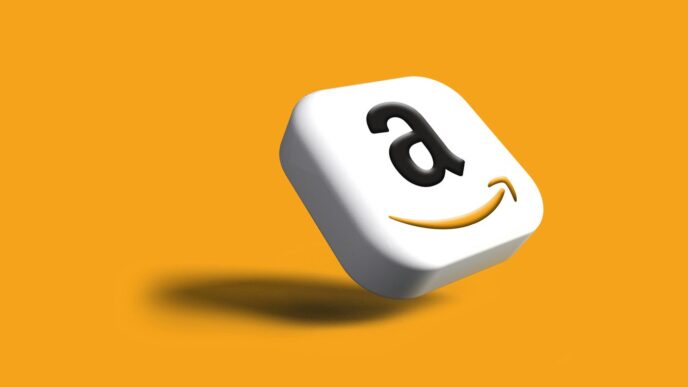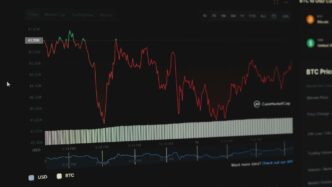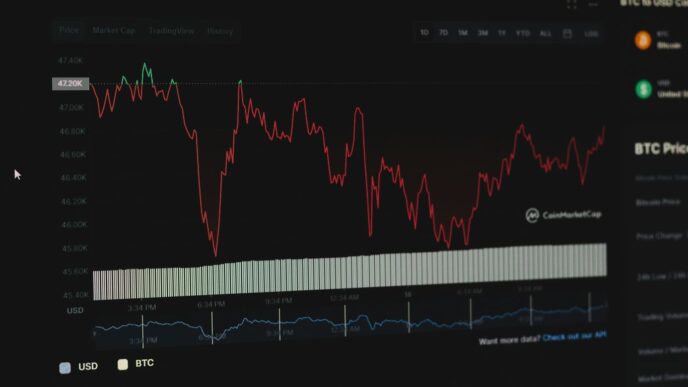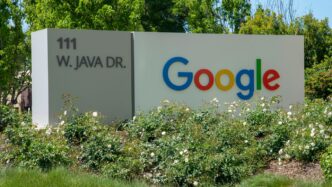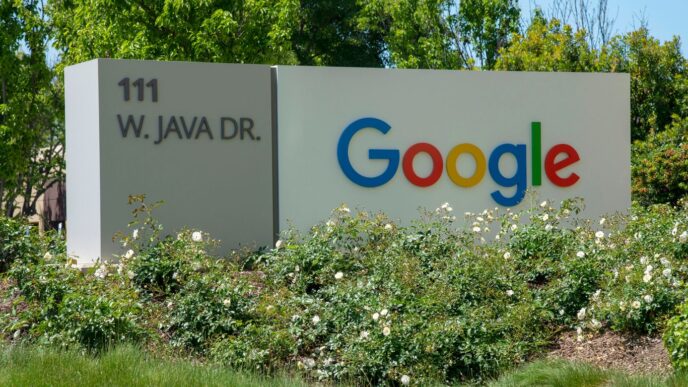The DOJ Google case, decided in 2025, has been all over the news lately. Basically, the Department of Justice took Google to court, saying the company had too much control over search and search ads. The court agreed and put some rules in place to try and open up the market. Now, Google is appealing, and honestly, it could be a while before any big changes show up for most people. Still, this is a big deal for tech companies, advertisers, and anyone who uses the internet every day.
Key Takeaways
- The DOJ Google case found Google had an illegal monopoly in search and search advertising.
- The court banned Google from making exclusive deals that kept its search engine as the default on most devices.
- Google is now required to share some search data and syndication services with competitors, but not ad data.
- Some suggested remedies, like breaking up Google or forcing choice screens, were not adopted by the court.
- Both Google and the DOJ are appealing parts of the decision, so the real-world impact may take years to show.
Background of the DOJ Google Antitrust Case
Origins of the Case and Initial Filings
The antitrust dispute between the Department of Justice (DOJ) and Google didn’t pop up overnight—it’s been building for years. The earliest filings date back to October 2020, when the DOJ, joined by several states, formally accused Google of using illegal tactics to stay on top of the search and search advertising markets. The lawsuit was grounded in claims that Google’s deals with device and browser makers made its search engine the automatic choice for nearly everyone. That cycle supposedly strangled any shot other search engines had at making a real dent in the market. For those interested in the history, there’s a good add-on perspective in United States v. Google LLC (2020).
Key Parties and Jurisdictions Involved
The key players in this legal battle were the DOJ and Google, but a bunch of state attorneys general also joined in. The case wound through the federal courts, with the U.S. District Court for the District of Columbia as the primary stage for early arguments. By the time trial rolled around, states like Virginia were weighing in, alongside the DOJ’s Antitrust Division. Here’s a quick rundown:
- Department of Justice (main plaintiff)
- Multiple state attorneys general (co-plaintiffs)
- Google LLC (defendant)
- U.S. District Courts (D.C. and Eastern District of Virginia handled different but related proceedings)
Central Allegations Against Google
At the heart of it, the DOJ accused Google of keeping its stranglehold on the search market through years of exclusive contracts and payments. The most flagrant examples were Google’s deals that made its search engine the default on browsers and smartphones. Allegations included:
- Locking down device manufacturers and carriers with huge payments to make Google search the automatic pick.
- Sidelining rival search engines by creating high switching costs for users and partners.
- Using its ad technology and data to block out fair competition in the search advertising sector.
The DOJ argued these moves kept innovation down, hurt competitors, and limited choices for everyday users. And those claims weren’t just about the past—there was growing concern that similar behavior could spill over into new tech, like generative AI. This is the groundwork that set up the case’s later twists, including the major court ruling.
Major Findings From the Court Ruling
The DOJ’s antitrust case against Google reached a turning point with its 2025 court decision, spelling out just how far the company had gone to shut out rivals. The details are pretty revealing — the court didn’t mince words about how Google operates in search or digital ads, and even took a hard look at new tech like generative AI.
Monopoly in Search and Search Advertising
The court stated directly that Google holds a monopoly in both general search and search advertising. This was the big headline: for over ten years, Google used its size and influence to keep rivals out and profits up.
Key facts from the ruling:
- For more than a decade, Google locked in exclusive agreements with device makers, wireless carriers, and browser companies,
- Google was routinely the default search option on phones and laptops, making it tough for any competitor to get noticed,
- The company tied lucrative deals around its Play Store and ad technology to ensure device makers stuck with Google’s products.
| Market Area | Google’s Estimated Share |
|---|---|
| US Search (2024) | 89% |
| Search Ad Revenue (2024) | 77% |
Evidence of Anti-Competitive Practices
The court listed specific anti-competitive moves that put Google out of bounds:
- Exclusive contracts squeezed out rival search engines by making Google the only viable option on new devices
- Google bundled its search and ad products with must-have licenses and revenue sharing, giving device and browser makers no real alternative
- Manipulation of digital ad auctions and suppression of competitor access in publisher advertising (“ad tech stack”) further hurt the market
What’s more, the ruling outlined how these actions didn’t just hurt rival tech companies — they kept users, advertisers, and publishers from seeing real benefits, like better choices or lower costs. Google’s dominance meant little competition and limited innovation in these sectors, a point stressed by the court’s findings about the costs of noncompliance for tech firms.
Significance of Generative AI in the Decision
The court specifically noted the rise of generative AI, calling it one of the next big threats to Google’s grip on online search. Google’s tactics, the court said, could stifle not just existing competitors, but also new players using advanced AI to offer smarter, more diverse search and advertising tools.
A couple big takeaways from this part of the decision:
- The court’s remedies are meant to make sure Google can’t block or buy out emerging AI companies like it did with earlier rivals
- Sharing certain data with “Qualified Competitors” aims to level the playing field for new AI-driven challengers
- The impact of this ruling goes beyond search — it changes how companies are likely to approach AI and digital advertising in the coming years
In summary, the court’s ruling spotlights years of practices by Google that kept competition at bay and left users with fewer choices in search and advertising. At the same time, there’s a nod to protecting innovation, showing how carefully tailored the court’s remedies really are.
Remedies Imposed on Google by the Court
The 2025 ruling against Google didn’t just slap the company on the wrist. It laid out a bunch of rules and restrictions that Google has to follow, all designed to break up the habits that made it nearly impossible for other search engines and newer products to gain ground. Here’s a closer look at each part of the court’s plan.
Restrictions on Exclusive Distribution Agreements
Google had a habit of locking up big deals that kept its search engine front and center on just about every device you could imagine. Now, that playbook is closed. Here’s how the new restrictions work:
- Google can’t make exclusive agreements that keep its search, Chrome, Google Assistant, or the Gemini app the default or only choice on devices.
- Those deals linking Play Store licenses or revenue-sharing to placing Google’s products up front? Also off-limits.
- Any arrangement that forces device makers or browser developers to keep Google’s search (or similar products) in place for more than a year is forbidden.
- Google can’t stop partners from offering an alternative search engine, browser, or a generative AI product at the same time.
If you’re curious about the legal win that got these rules rolling, you can dig into the background at significant legal remedies against the company.
Requirements for Data and Syndication Access
To level the search field, the court didn’t just take away Google’s contracts—it also ordered them to share! But there’s a careful balance here:
- Google has to give certain rivals access to its search index and anonymized user-interaction data. This helps other search providers build up quality.
- Ads data, though, is off the table to protect what Google considers private business info.
- Google must also let competitors use its search and text ad syndication services—basically, the technical rails that let others show web search results and ads.
Oversight and Duration of Enforcement Measures
Oversight is a big part of making sure Google actually does what it’s told. The court established:
- A Technical Committee to watch everything and help enforce the new rules.
- Remedies stay in effect for six years, with regular check-ins and updates as needed.
- Google is required to publicly announce any major changes to its ad auction process so no one’s caught off guard.
A quick summary looks like this:
| Enforcement Feature | Details |
|---|---|
| Technical Committee | Monitors compliance |
| Remedy Duration | 6 years |
| Public Disclosure by Google | For ad auction changes |
Remedies Proposed But Not Adopted
Some suggestions were just too much for the court—or maybe a bit off the mark. Here are a few that didn’t make the cut:
- No forced sell-off of Chrome, Android, or other core assets—Google stays in one piece.
- There won’t be a strict ban on all paid distribution deals (just exclusive ones).
- Google doesn’t have to show “choice screens” on devices for users to pick a search engine.
- Broad data sharing with advertisers, wide-ranging education campaigns, and anti-retaliation rules were also turned down.
The court aimed for a fix that shakes up the search market but avoids disrupting users or partners just for the sake of it. Next, we’ll see if these remedies spark any real changes.
Industry and Consumer Impacts of the DOJ Google Decision
Potential for Increased Market Competition
The court’s ban on exclusive agreements means other search engines finally get a shot at winning users—and not just in theory. Device makers and browser developers won’t be locked into one choice. More search engines can actually compete on the same devices, which is a big shift after years of Google being the default almost everywhere. This could let upstart companies or those with new ideas in generative AI try different things, shaking up the scene that’s felt pretty stuck for a while.
Here are a few things the industry might see in the next couple of years:
- New search engines, including those using advanced AI, appear on more phones and browsers
- Ad prices and tech strategies may shift as rivals get fresh access to Google’s search and ad syndication tools
- Tech companies may experiment more, since Google’s grip on user data is loosened
| Area | 2024 Market Share* | Projected Post-Ruling Share** |
|---|---|---|
| Google Search | 91% | 75-80% |
| Bing | 6% | 10-12% |
| Others (incl. AI start-ups) | 3% | 8-15% |
*Estimated by StatCounter. **Rough, based on analysts’ projections over 2-3 years.
Changes for Device Manufacturers and Partners
For years, if you made a phone or browser, you almost had to set Google as your search engine, usually in exchange for a license or part of Google’s ad revenue. Now, you can pick the search provider you want—without losing access to the Play Store or anything else big. Oh, and if you’re a smaller web browser or app, it’s much easier to rethink how you handle search.
- Device makers can negotiate with different search providers instead of just taking Google’s terms
- Small browser companies may launch with unique search options out of the box
- Advertising partners are affected, too, since they are less limited by Google-imposed deal terms
Implications for User Choice and Innovation
So what does all this mean if you’re just an everyday internet user? The big thing is, you might actually start to see more variety when you open your favorite browser or set up your phone. Rather than being nudged to use Google, other options could be right there. This might also push everyone, even Google, to work harder to offer new features or keep you safer from things like deceptive links and social engineering tricks, as Google’s browser safety technology advancements try to address.
A few realistic changes for people:
- Set up screens offering several search engine options
- Unique search tools powered by AI that don’t come from Google
- New privacy settings or ad controls, since rivals need to stand out somehow
Overall, the ruling makes it possible—not certain, but possible—that the online world gets a little less predictable, and a bit more interesting.
Response and Appeals From Google and the DOJ
Google’s Legal and Public Position
Google announced quickly after the verdict that it disagreed with the court’s decision and planned to challenge it. They argue that the ruling doesn’t reflect the current state of the digital markets and that their agreements were legal and fair. Google’s public statements stress that they never forced device makers or partners to exclude rivals, and that choices were always available. They say these remedies risk undermining the free products and services people count on every day.
Here’s what Google is doing in response:
- Filing formal appeals to overturn or narrow the court’s order
- Public outreach, like blog posts and interviews, to sway opinion
- Lobbying lawmakers, arguing the decision could set a bad example for regulating fast-moving sectors like generative AI
Google has made it clear that the legal fight is far from over, and that they’ll keep pushing back on any remedies they see as too harsh or outside the law.
Department of Justice’s Next Steps
The DOJ called the verdict a big win and said the remedies will, in their view, open up the search market. At the same time, they’re far from finished:
- Evaluating a possible appeal regarding aspects of the remedies they wanted but didn’t get (like a breakup of some of Google’s business units)
- Setting up systems to enforce the court’s restrictions and monitor Google’s compliance, including a new technical committee
- Continuing work with state attorneys general and other agencies as new digital markets like those for generative AI evolve
According to multiple statements—some delivered after big announcements in other sectors like new spaceship innovation—the DOJ says it will keep fighting for competitive markets. They’re already prepping for next steps, which could mean more lawsuits or new policy proposals if they see Google skirting the edges of the ruling.
Projected Timeline for Implementation
Nothing here is going to change overnight. Both Google and the DOJ are pushing ahead with different legal moves, and appeals could drag out the practical effects for a while. Here’s what the likely timeline looks like:
| Stage | Estimated Timeline |
|---|---|
| Google announcement to appeal | October 2025 |
| DOJ begins enforcement prep | October–December 2025 |
| Appeals process begins | Q1 2026 |
| Court reviews and decisions | Throughout 2026–2027 |
| Remedies take full effect* | 2027 or later (if upheld) |
*If appeals delay implementation, some changes might not be widely noticed until the late 2020s. For most people, Google Search and its apps will probably work the same for some time. But the legal and tech world will be watching every move, waiting to see what really changes—and when.
Broader Implications for Technology Regulation

It’s hard to overstate how much the DOJ’s Google case is shaking up the tech world. This decision is a wake-up call for both regulators and big platforms—the rules of the game are changing. What comes next could affect not just search engines but every company tied to digital markets, data, and advertising. Let’s look at some of the ways the fallout is spreading out.
Influence on Future Antitrust Enforcement
- Regulators will feel more confident about tackling tech giants. The Google case has set a precedent: even the biggest players aren’t immune.
- Other platforms—think Amazon, Apple, Meta—are watching closely, wondering if they’ll be next on the DOJ’s radar.
- Smaller tech firms could see more opportunities as courts are now willing to set actual limits on dominant business practices.
Ripple Effects for Digital Advertising and AI
- Opening up Google’s data and search syndication could make it easier for up-and-coming ad tech companies to get a foothold.
- The court considered the rapid growth of generative AI, recognizing that future tech can’t just be dominated by today’s leaders.
- Some expect a surge in new or improved search engines, especially those that use AI to offer different experiences.
Here’s a quick look at areas likely to see changes post-ruling:
| Area | Expected Change |
|---|---|
| Search Market | More rivals, fewer default deals |
| Digital Advertising | More syndication, new entrants |
| AI Competition | Greater access, faster innovation |
Perspectives From Industry Leaders
- Some startup founders are relieved, saying they finally have a shot at competing without being shut out by exclusive contracts.
- Larger tech firms are split—some see this as overdue, others say Google simply won because their product is strong.
- Consumer advocacy groups are hopeful this ruling means more choices and better privacy, but cautious about how fast real changes will come.
So, the Google ruling isn’t just about one company. It’s about remaking how competition, innovation, and power intersect across the internet. Keep an eye on this—it’s only the beginning.
Conclusion
So, after all the courtroom drama and big headlines, the DOJ’s case against Google has left a mark, but it’s not the end of the story. The court’s ruling means Google can’t use those exclusive deals to keep out rivals, and it has to open up some of its data and services to competitors. But let’s be real—Google is appealing, and the DOJ might push for even more changes, so nothing’s changing overnight. For most people, search and ads will look the same for a while. Still, this case could shape how tech giants do business and how new players get a shot in the future. It’s a wait-and-see game now, and only time will tell how much things actually shift in the digital world.
Frequently Asked Questions
What is the DOJ Google antitrust case about?
The DOJ Google antitrust case is about the U.S. government accusing Google of using unfair practices to keep its spot as the top search engine and to control search advertising. The court said Google made exclusive deals with device makers and partners, making it hard for other companies to compete.
What did the court decide in the 2025 ruling?
In September 2025, the court ruled that Google broke antitrust laws by keeping a monopoly in search and search ads. The court did not make Google split up, but it did order Google to stop making exclusive deals and to share some data with competitors to help them compete.
How will this ruling affect people who use Google?
Most people will not see changes right away. Over time, the decision could mean more choices for search engines on phones and computers, and possibly new features or better privacy from different companies. But these changes may take years because Google is appealing the decision.
What are the main remedies the court ordered for Google?
The court told Google to stop making exclusive contracts that block competitors, to allow device makers to choose other search engines, and to share some search data with rivals. Google also has to let competitors use its search and ad services on fair terms, and a technical committee will watch over these rules for six years.
Did the court order Google to break up or sell any parts of its business?
No, the court did not order Google to break up or sell any of its products like Chrome or Android. The court chose not to make Google show ‘choice screens’ for search engines or ban all payments to partners, focusing instead on stopping the most harmful behaviors.
What happens next for Google and the DOJ?
Google plans to appeal the court’s decision, and the Department of Justice is also thinking about appealing parts of the ruling. Because of these appeals, it could take several years before any big changes happen for the industry or for people using Google.








